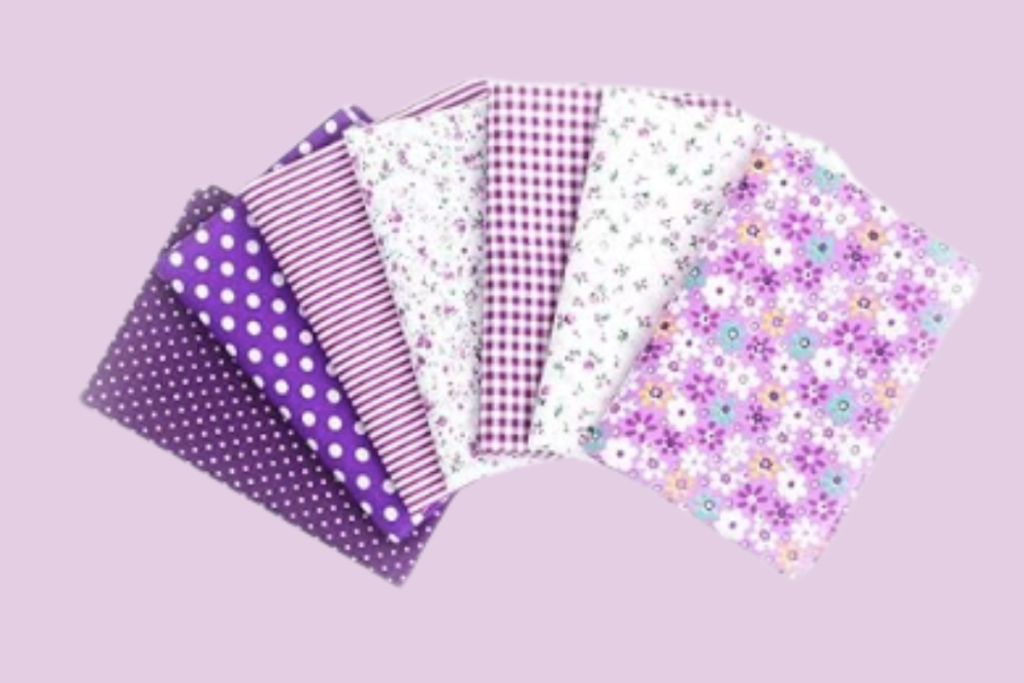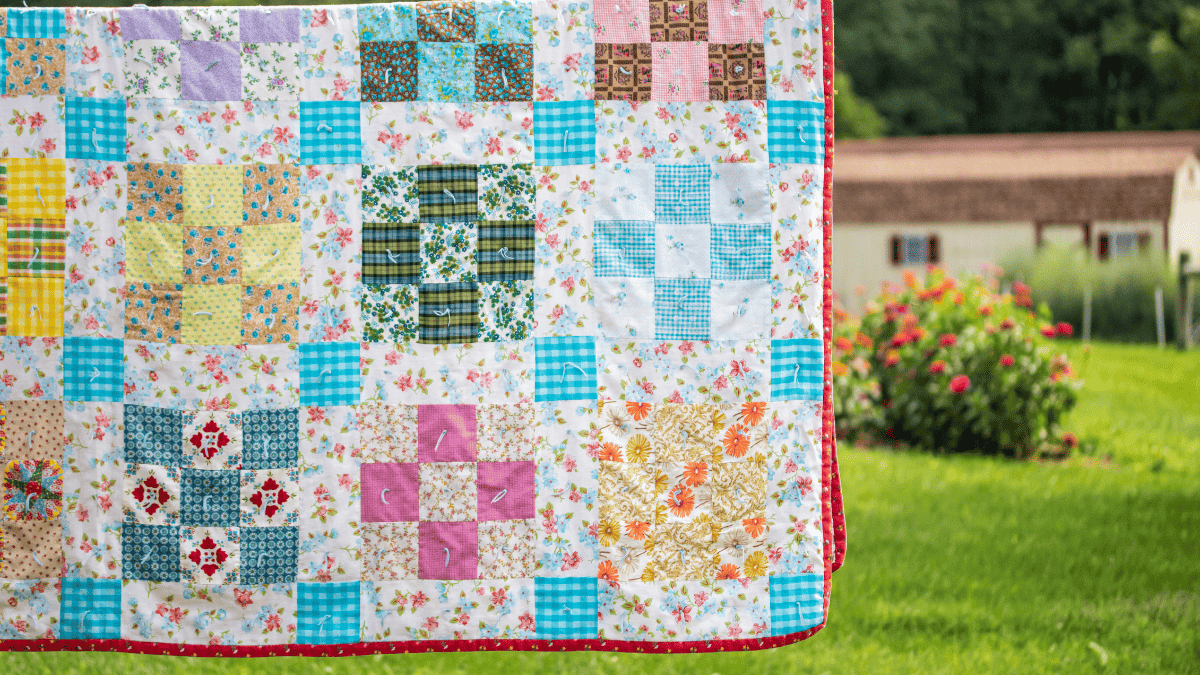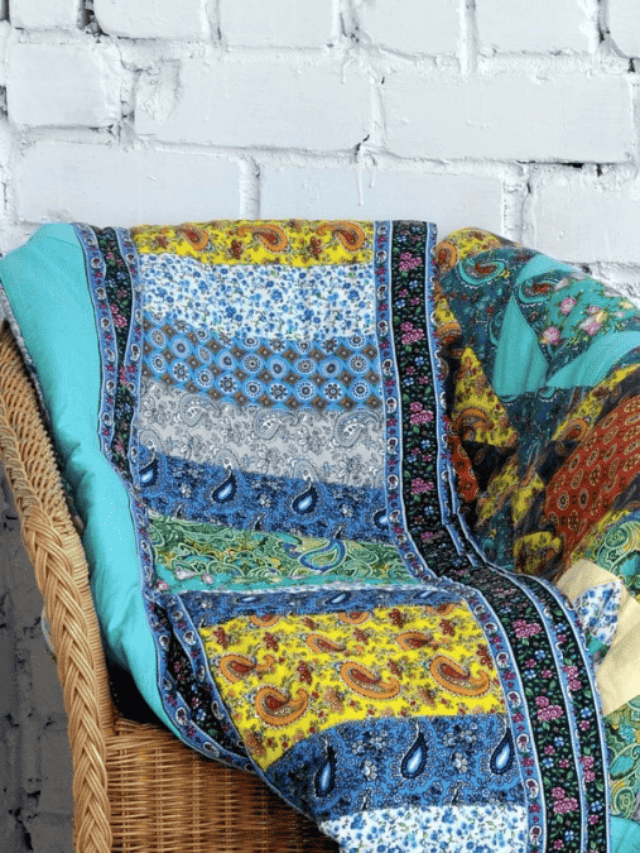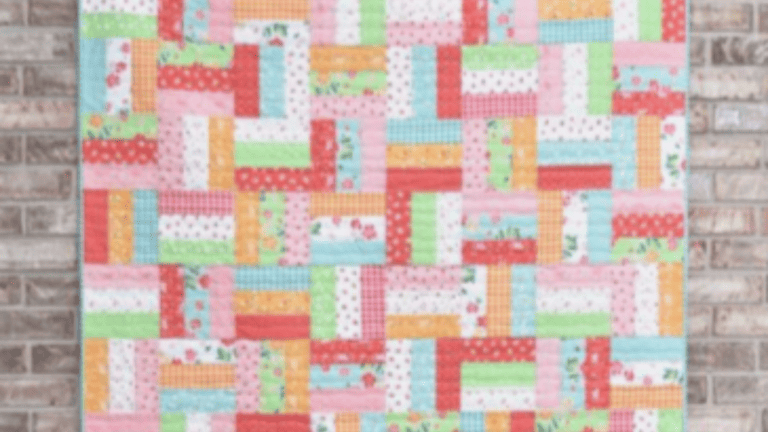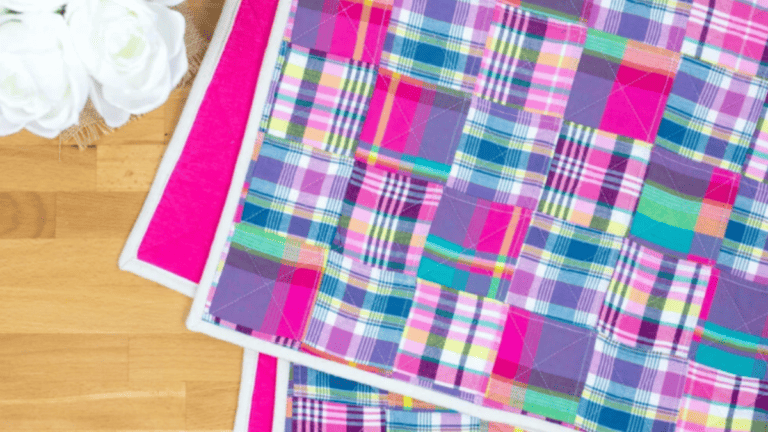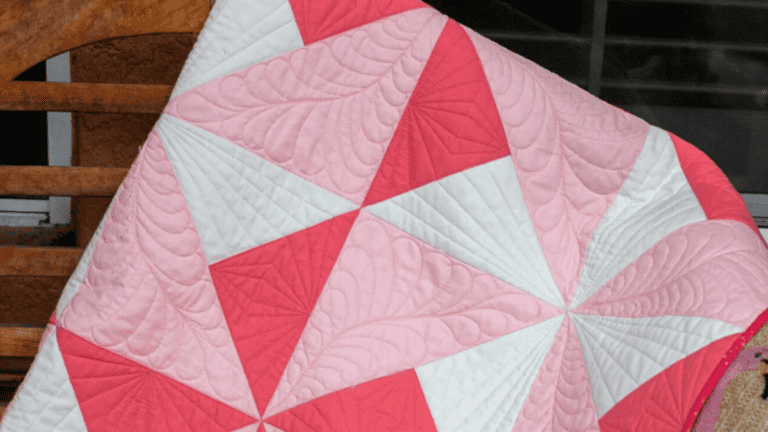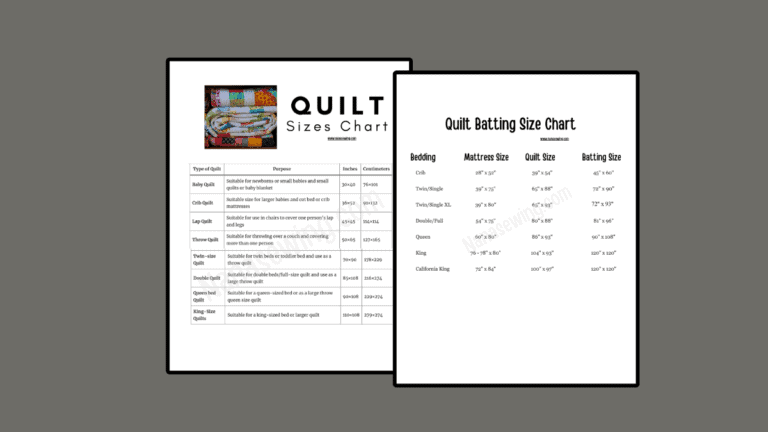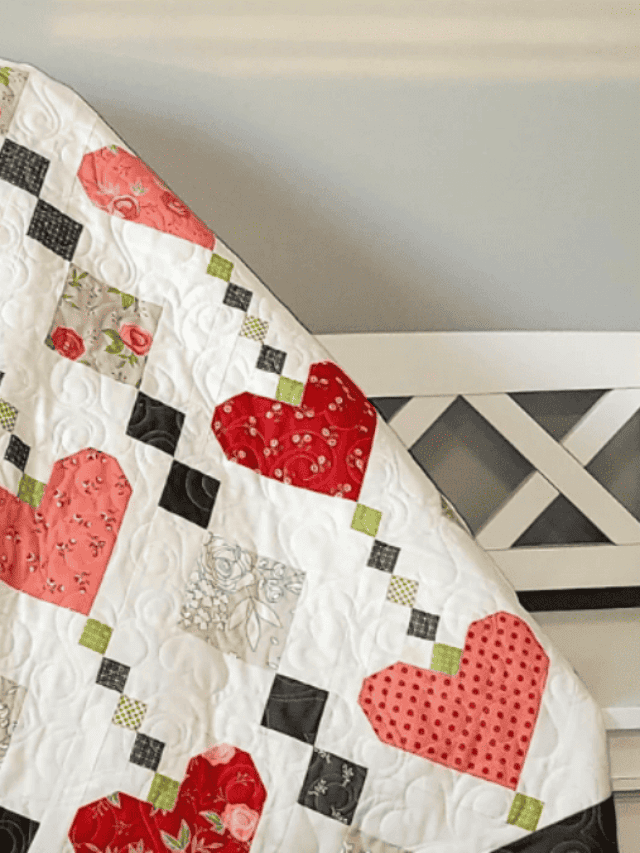Crib Quilt Size: Free Printable Quilt Size Chart
When it comes to selecting the right quilt for your baby’s crib, size is an essential aspect to consider that is why we created this crib quilt size guide.
A crib quilt that fits properly not only makes the crib look cozy but also ensures your baby’s comfort and safety. Standard crib quilts typically measure about 36 inches by 52 inches.
This size is designed to fit snugly within the crib’s frame without excessive overhang, which can pose a risk for little ones.
As you set out to choose a quilt, keep in mind that while crib sizes are regulated, there can be slight variations in dimensions based on the brand and design.
Therefore, it’s wise to measure your crib before purchasing or crafting a quilt.
A well-sized crib quilt can serve as a play mat or a decorative piece for the nursery. It’s a versatile item that, with the right care, can be cherished even as your child grows.
Quilt Size Chart
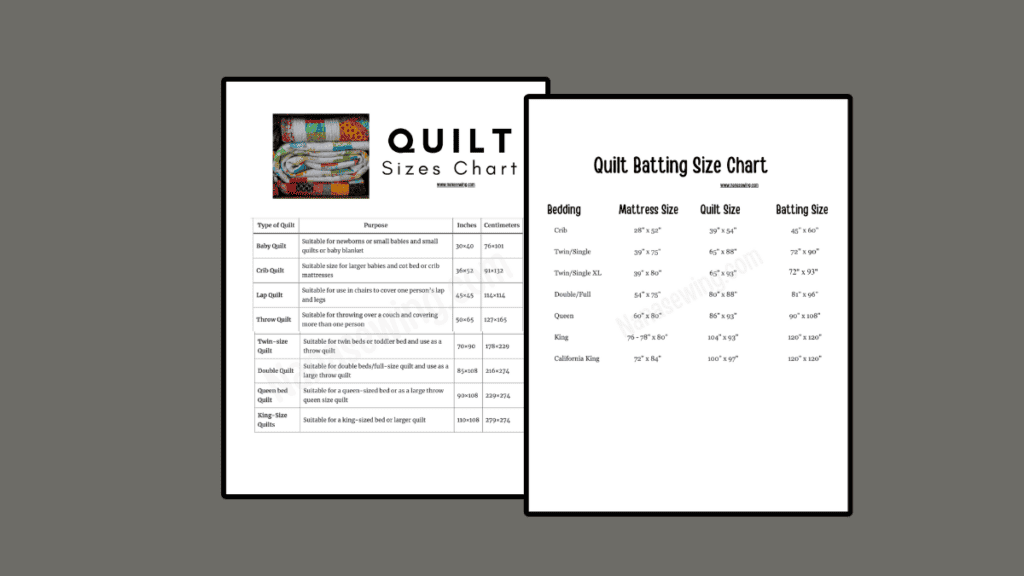
Download: Quilt Size Chart
Our team makes a ton of quilts in a year and we forget what size we need for each one and sometimes patterns are wrong.
We sat down and created a quilt size chart that is a handy resource that covers different sizes of beds. From a standard mattress size, lap quilt, to twin quilts, queen quilt and even a larger quilt.
Keep in mind that beds have a lot of different measurements based upon toppers, material it’s made of etc. Sometimes we take the chart, measure the bed including the length of the sides of the bed to the floor and then design the quilt.
Standard Quilt Sizes
Here’s a rundown of typical dimensions for quilts to give you an idea:
- Twin: 68 x 86 inches
- Double/Full: 81 x 86 inches
- Queen: 90 x 95 inches
- King: 106 x 96 inches
These measurements provide ample coverage for standard mattresses with a reasonable allowance for drape on the side of the bed and bottom.
Crib Quilt Size
For those sweet little ones, you’ll want a quilt that matches the scale of a crib without overwhelming it. Check out these popular baby quilt dimensions:
- Preemie: 18 x 24 inches
- Newborn: 30 x 30 inches
- Baby quilts: 36 x 52 inches
These are the perfect size for swaddling or as a play mat, growing with your baby from the crib to toddlerhood.
Quilt Patterns for Baby Quilts
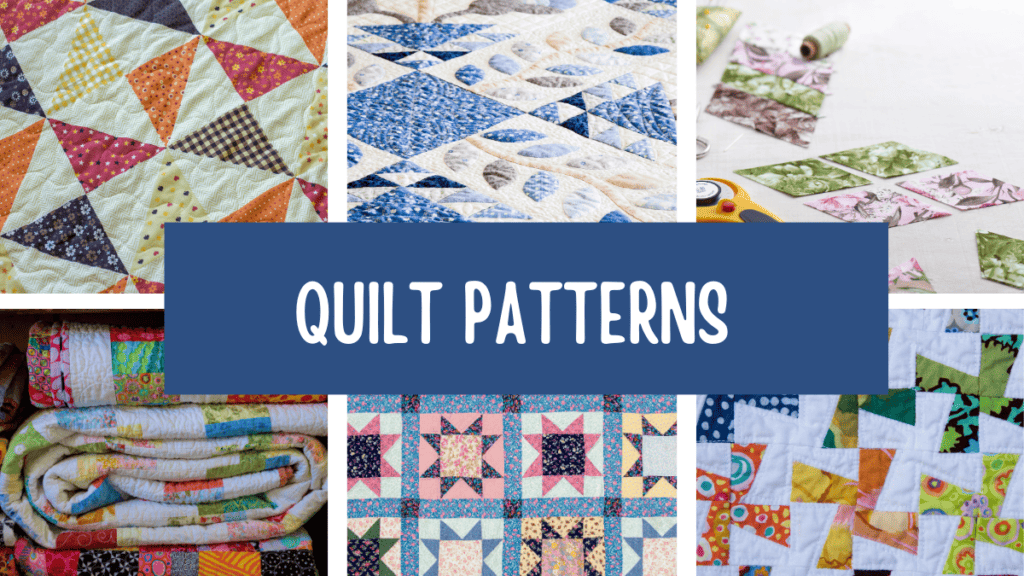
Now that you found the right size for these smaller quilts, it’s time to find the right pattern. It can be super overwhelming but just remember that if you are a beginner quilter you will want something with fewer cuts.
For experienced quilters, you can easily make it with a ton of different pieces.
When you finish your quilt, you will want to find someone with a long arm quilter so that you can get your quilt finished.
If you are in Texas or New Mexico, we have a family member who finished quilts and can pass on her name.
If not, check your local quilt stores, or a good place to find something is simply going into your local Facebook group and asking for recommendations.
Quilt Sizes

We talked about this earlier but it’s worth repeating because there is NOTHING worse then finishing a quilt, and it’s too small or too large size of the quilt.
When you’re looking to craft a quilt that fits perfectly, knowing the dimensions of your bed is crucial.
Each bed type has its distinctive mattress size, which requires a specific quilt size to match. These are the most common quilt size but learn from our mistakes and measure the mattress for the best fit. It’s always a good idea before you get started.
Crib and Toddler Beds
For crib mattresses, the standard size is approximately 28 x 52 inches. Your crib quilt should ideally be about the same size to fit snugly and safely.
When it comes to toddler quilts, they can double as a crib quilt, making them versatile for growing kids.
Twin and Full-Sized Beds
A standard twin bed measures 38 x 75 inches, requiring a twin-size quilt that’s typically 68 x 86 inches, allowing for a nice drape over the edges.
A full-sized bed, often confused with double beds, measures 54 x 75 inches. For a proper fit, a full size quilt should be around 81 x 86 inches.
Queen and King Beds
Moving up to a queen size bed, which measures 60 x 80 inches, you’ll need a queen size quilt that’s about 90 x 95 inches.
For those roomy king-size and California king beds, where a king measures 76 x 80 inches and a California king is slightly longer at 72 x 84 inches, king and California king quilts should measure approximately 108 x 95 inches to provide ample coverage.
Quilting Tips
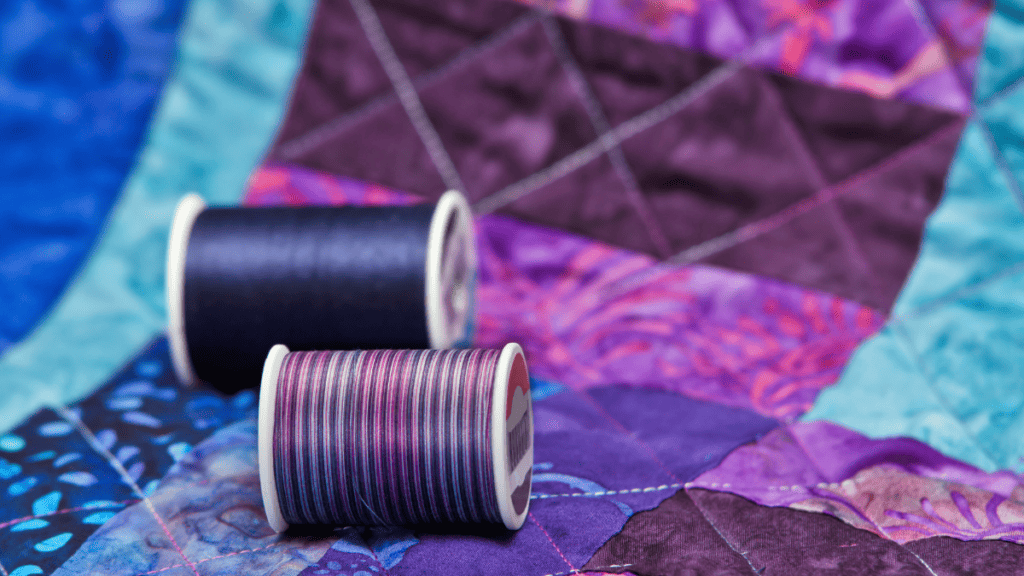
Before diving into quilt making, it’s crucial to understand the basic materials and methods. Good preparation will set you up for success on your first quilt.
Selecting the Right Fabric
When starting your quilting project, choosing the right fabric is key. Cotton is a popular choice due to its ease of handling and care.
For a baby quilt, you might consider soft fabrics like flannel. Fat quarters, which are quarter-yard cuts of fabric, are excellent for beginners because they’re affordable and come in a variety of patterns and colors.
Try to purchase a little more than your quilt dimensions require to allow for any mistakes or pattern matching.
- Fabric Tips:
- Cotton is versatile and beginner-friendly.
- Fat quarters are great for small projects.
If you struggle to match colors or that simply overwhelms you, we recommend looking at Jelly Roll Patterns Or Patterns that use Charm packs.
The benefit of using something like Jelly Rolls is that the strips are already cut for you. They can easily be used for different quilt sizes and they are just a personal preference of mine as my cuts aren’t always precise which in quilting they need to be.
I do rely on my rotary cutter and quilting rulers to cut straight lines along with a self healing cutting mat. These are essential sewing supplies when it comes to quilting.
I put together a list of my must have items below after we talk briefly about batting.
Calculating Batting Size
Your batting, the middle layer of your quilt, provides warmth and volume. Ensure your batting size is larger than your quilt top dimensions; this allows for the quilting process’s potential shrinkage and errors.
If your finished quilt top is 36 by 52 inches, aim to have your batting at least 2-3 inches larger on each side.
- Batting Size Guide:
- Quilt top size: 36 x 52 inches
- Batting size: 40 x 56 inches (+2-3 inches on each side)
Sewing Supplies:
- Fabric
- Rotary Cutter
- Scissors
- Sewing Clips and Sewing Pins
- Magnetic Seam Guide (helps you sew straight lines)
Fabric Giveaway
Enter our monthly fabric giveaway. Simply complete the tasks daily and you will be entered into the drawing. Winner will be randomly drawn on the first day of the month and notified via email
